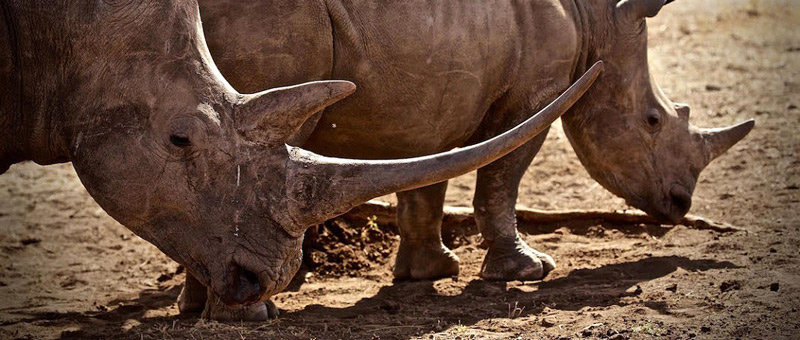Times of India
KOLKATA: An undercover probe revealed recently that Somali group al-Shabaab, which took responsibility for the Nairobi mall carnage last September, uses proceeds from the illegal ivory trade to fund its terrorist operations. Investigation sponsored by the Los Angeles based Elephant Action League tracked the money trail connecting elephants massacred in Kenya to ivory buyers in Asia through this group, whose returns from the trade are so high that it pays its mercenaries more than the Somali government pays its regular soldiers….
…The Prime Minister has called Left wing extremism (LWE) the biggest threat to the country’s security. Significantly, India’s tiger population has dwindled simultaneously with the scourge of this militancy, falling to an all time low of 1,410 a few years back. Tuskers and rhinos too have been disappearing in militancy-hit states. The situation in Odisha, afflicted as much by militancy as by poaching, is perhaps representative of the state of affairs around the country.
The case of Similipal is illustrative. In Odisha, tigers are now confined almost entirely to the Similipal Tiger Reserve in Mayurbhanj – home also to over 300 elephants – bordering Jharkhand and Bengal. Less than a decade ago, the tiger estimate in Similipal was 101. At last count, theNational Tiger Conservation Authority put the figure at 23.
In the years leading up to 2009 there were 24 Naxalite related incidents in the district, many of them in the fringe areas outside the reserve. Starting March 29, the sanctuary was hit by a series of Naxalite attacks that devastated it, the suddenness taking everyone – including police – by surprise. The 17 incidents over a few days, spread over the entire geographical area of the park, suggested militants had intimate knowledge of its layout, possible only from prolonged acquaintance. The ensuing wave of poaching was such that a fact-finding team deputed by NTCA a year later reported that elephants and other wildlife were being slaughtered in the park.
It took years of effort by police to rid the park of Naxalites but links between militants and poachers became apparent, particularly with the district being an important starting point of the illicit wildlife trade.
Not surprisingly, clandestine wildlife trade routes from Odisha originate mostly from Maoist affected districts through similar areas of Jharkhand, Bengal and Bihar into Maoist-controlled Nepal. Significantly, the concept of a Red corridor, dividing India into east and west, envisages Nepal in the north through seven Indian states down south that include Bihar, Jharkhand, Bengal and Odisha. Nepal is also an important hub of the illicit wildlife trade, serving both as market and international market feeder.
Wildlife authorities restrict entry of officials other than their own into sanctuaries, particularly the core areas, purportedly to keep them inviolate. Though the Wildlife (Protection) Act does not restrain public servants on duty from entering sanctuaries without permit, the field position is more restrictive and even police are not exempted. Over a period of time such restrictions adversely affect the intelligence gathering mechanism of police, which becomes a major security handicap because militants favour forests and sanctuaries as hideouts.
Wildlife authorities would be better placed to explain if restricting access of officials helps conservation efforts, particularly with the limited manpower available to check incursions of poachers and militants in the vast areas of forests and sanctuaries. However, if the restrictions they impose insulate police from keeping track of developments inside sanctuaries – as is apparently happening – militant activities and crimes get encouraged.
The tiger, elephant and rhino are heritage animals of our country and it is our duty to do our bit for their well being. But we shouldn’t miss the woods for the trees – overlook national security while focusing on poaching. Wildlife sanctuaries not being outside the jurisdiction of criminal laws of the country, it would be ironical if steps to prevent poaching, punishable with three years imprisonment are at the expense of crimes against the state punishable with death or life imprisonment.
Richard Jenkins, manager of the Global Species Programme of International Union for Conservation of Nature (IUCN) sums up the need of the hour: “We have to look for greater cooperation with agencies that have more experience with criminal and security issues.”
There needs to be integration of wildlife and security management in the country, not of poaching and militancy as seems to be happening. The nation will have a heavy price to pay otherwise, presuming it is not already doing so.
– The author, a senior IPS officer, has recently submitted his PhD thesis on ‘Elephant Deaths in Odisha – Targeted poaching & collateral killing over the last decade’





